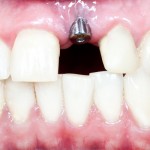
Tapered screw-retained connections such as the Morse taper have been reported to be a reliable option for single implant-supported crowns. However, studies report an incidence of mechanical complications of around 4% with half of these related to screw loosening. Consequently, locking taper-implant abutment connections using screwless friction retained tapered abutment was developed although clinical evidence for the predictability of this system is controversial.
The aim of this review was to evaluate the clinical performance and complications of single crowns retained by the locking taper system.
Methods
A protocol for the review was registered in the PROSPERO database. Searches were conducted in the Cochrane, Embase, Medline/PubMed, Scopus, Web of Science, OpenGrey, Google Scholar and ClinicalTrials.gov databases. Studies comparing placement of implants with a locking taper implant-abutment connection to Morse taper connections for single crown published in English with a sample size>5 were considered. Two reviewers independently searched for, and selected studies extracted data and assessed quality using the Cochrane risk-of-bias Tool (RoB 2) for randomised controlled trials (RCTs) and the modified Downs and Black checklist for uncontrolled studies. Outcomes were implant survival and success rates, prosthesis success rate, complications, and marginal bone loss (MBL). Subgroup analyses were undertaken for follow-up at up to 1 year, 1 to 5 years, and more than 5 years
Results
- 12 studies (3 RCTs, 9 prospective cohorts) involving a total of 2292 implants.
- 11 studies used conventional loading with 1 study not reporting on loading protocol.
- Two of the RCTs were considered to be at high risk of bias and one at low risk. 7 of the cohort studies were considered to be fair and two poor.
- Implant survival rate reported by individual studies ranged from 93.5% to 100%.
- 61 of the 2292 implants failed 23 were lost in ‘healing period’ (early failures), 34 were lost after loading (late failures). The time point for failure was not specified for 4 implants.
- 8 studies reported on biological complications and 8 studies on prosthetic complications.
- Meta-analyses for implant survival and success at specified time points are shown in the table below
| Implant survival | Implant success | |||
| No. of studies | Rate (95%CI) | No. of studies | Rate (95%CI) | |
| Up to 1 year | 10 | 0.99 (0.97 to 0.99) | 4 | 0.99 (0.97 to 0.99) |
| 1 to 5 years | 7 | 0.98 (0.96 to 0.99) | 3 | 0.98 (0.97 to 0.99) |
| More than 5 years | 5 | 0.99 (0.98 to 0.99) | 3 | 0.9 7(0.92 to 0.99) |
Conclusions
The authors concluded: –
Implants with a locking taper connection provide a safe alternative for implant-supported single crowns with high survival and success rates in the long term, good maintenance of bone levels over time, and a low incidence of complications.
Comments
The reviewers followed a pre-registered protocol and searched a good range of databases. However restricting inclusion to English language papers could mean that some relevant studies were excluded. The findings indicate that the locking taper system had similar performance to the conventional Morse taper system. As the authors note the findings relate to implants that were conventionally loaded and only 2.6% of all the implants placed failed. The frequency of reported biological and prosthetic complications was also low at 2.6% and 2.9% respectively. In addition, the was a lack of studies directly comparing the two implant systems and most studies used an Italian system which may not be readily available in other countries.
Links
Primary Paper
Ribeiro MCO, Vargas-Moreno VF, Gomes RS, Faot F, Del Bel Cury AA, Marcello-Machado RM. Implant-supported crowns with locking taper implant-abutment connection: A systematic review and meta-analysis. J Prosthet Dent. 2022 Jul 18:S0022-3913(22)00379-1. doi: 10.1016/j.prosdent.2022.06.005. Epub ahead of print. PMID: 35864024.
